Tips for Managing Depressive Thoughts Without Judgment
Introduction
Depressive thoughts can feel like an invisible weight—heavily shaping how you see yourself, your future, and the world around you. These thoughts might whisper, “You’re a burden,” “Nothing will ever change,” or “You don’t matter.” Left unchecked, they can spiral into hopelessness and deep self-criticism.
But here’s the truth:
Having depressive thoughts doesn’t make you weak. It makes you human.
And you don’t have to fight or suppress them. In fact, research shows that meeting these thoughts with curiosity and compassion—not judgment—can be a powerful tool in managing depression.
In this article, we’ll explore practical, gentle strategies for managing depressive thoughts without shaming yourself, using tools from psychology, mindfulness, self-compassion, and neuroscience.
Looking for online therapy? Click here.
🧭 Why Judgment Makes Depression Worse

When depressive thoughts arise, many people try to push them away—or beat themselves up for having them in the first place.
“Why am I like this?”
“I should be stronger.”
“What’s wrong with me?”
This inner dialogue adds a second layer of suffering—shame.
Instead of easing the depressive thought, judgment amplifies it by confirming its negative bias. This creates a cycle:
- A depressive thought arises.
- You judge yourself for it.
- The judgment becomes more evidence that the thought is true.
- Repeat.
To break this cycle, we must shift from judging our thoughts to noticing them.
💡 The Goal: Awareness Without Attachment
Depressive thoughts are often automatic. They arise from long-standing mental patterns, cognitive distortions, trauma histories, or neurochemical imbalances.
Instead of trying to erase them, the goal is to see them clearly, respond gently, and choose something different—one moment at a time.
Let’s explore how.
🪞 1. Name the Thought—Without Making It You
When a depressive thought arises, pause. Instead of accepting it as truth, label it for what it is:
“That’s a depressive thought.”
“That’s a part of me that’s hurting.”
“That’s the voice of hopelessness again.”
This simple naming helps create psychological distance between you and the thought. You are not your depression. You are the one observing it.
🧠 Why it works: Naming activates the brain’s prefrontal cortex (rational thinking) and reduces activity in the emotional center (amygdala), lowering distress.
🔄 2. Don’t Argue—Acknowledge
You don’t have to challenge every thought with logic. In fact, arguing with depressive thoughts can sometimes make them dig in deeper.
Instead, practice acknowledgment:
“This is what my brain is saying right now. I don’t have to agree with it. But I’m not going to fight it either.”
You can even add:
“And I choose not to act on it.”
This defuses the urgency of the thought.
🌬️ 3. Use Gentle Breathwork to Regulate Your Body First
When depressive thoughts feel overwhelming, start with your body, not your mind.
Try this:
- Inhale slowly for 4 counts
- Hold for 2
- Exhale slowly for 6
- Repeat for 3-5 rounds
This type of breathing activates the parasympathetic nervous system, calming the fight/flight/freeze response that depressive spirals can trigger.
🧠 Why it works: When your body feels safer, your brain is more receptive to new perspectives.
✍️ 4. Externalize the Inner Critic
Grab a journal and try this prompt:
“If my depressive voice were a character, what would it sound like?”
Give it a name. A tone. A backstory.
You might realize:
- It sounds like a critical parent
- It mimics an old bully
- It’s trying to protect you in a twisted way
Once externalized, it becomes less powerful. You can talk back—or even comfort it.
“I see you, critic. But I’m not going to let you drive today.”
🧘 5. Practice Mindful Observation (Not Reaction)
Mindfulness is not about silencing thoughts. It’s about noticing them without judgment.
Try this 2-minute practice:
- Sit quietly and notice any thoughts that arise.
- Imagine each thought as a cloud floating by.
- Say silently: “Thinking… thinking…” each time you get hooked.
- Let the thought drift without following it.
This teaches your brain you don’t have to believe or obey every thought.
💬 6. Replace “Why” With “What”
Instead of:
“Why do I always feel like this?”
Try:
“What do I need right now?”
“What’s the kindest thing I can do for myself in this moment?”
“Why” questions often lead to shame spirals. “What” questions open up curiosity and compassion.
🫶 7. Use Self-Compassionate Reframes

Researcher Kristin Neff’s work on self-compassion shows that being kind to ourselves during pain actually boosts motivation and emotional resilience.
When a harsh thought arises, try this reframe:
- “I’m struggling right now—and that’s human.”
- “It’s okay to feel like this. I’m not alone.”
- “What I feel is real, but it doesn’t define me.”
Say it out loud if you can. Let it land.
🧩 8. Ground in the Present Moment
Depressive thoughts often pull us into the past (regret) or the future (fear). Grounding can anchor you in now.
Quick grounding tools:
- Look around and name 5 things you see
- Run cold water over your hands
- Notice your feet touching the floor
- Hold a textured object and describe it in detail
These practices reset your attention and help your mind shift gears.
🧑🤝🧑 9. Share With Someone Safe
Saying your depressive thoughts out loud can feel terrifying—but it can also disempower them.
You might say:
- “I’m having some really dark thoughts today. I just needed to say it.”
- “I don’t need fixing—I just need someone to hear me.”
Often, being witnessed without judgment is more healing than advice.
And if you don’t have someone to talk to right now, consider:
- Crisis Text Line (Text HOME to 741741 in the U.S.)
- A mental health support group
- A therapist or counselor
🎯 10. Use “If–Then” Planning for Darker Days
When your brain is clearer, make a simple plan for tough moments.
“If I start to spiral, then I will:
- Text [friend name]
- Drink a glass of water
- Go for a walk around the block
- Read a page of my favorite book”
Having a pre-chosen lifeline reduces decision fatigue in low moments.
🧪 11. Track Patterns—Not Perfection
Use a mood tracker, app, or journal to log:
- When depressive thoughts show up
- What you were doing beforehand
- What helped (even a little)
Over time, this builds self-awareness without self-blame. You’re learning your emotional “weather”—and how to prepare for storms.
🧠 12. Remember: Depressive Thoughts Lie
Depressive thoughts often sound very convincing. But they’re not truth—they’re mental habits shaped by pain, fatigue, and imbalance.
Common lies include:
- “You’re a burden”
- “Nothing will ever change”
- “You’re not good enough”
- “Everyone would be better off without you”
The antidote isn’t forced positivity—it’s compassionate reality-checking.
Try saying:
“That’s a thought, not a fact. And I don’t have to act on it.”
⚖️ 13. Know When to Seek Help
If your depressive thoughts are persistent, worsening, or include suicidal thinking—please don’t manage them alone.
Reach out to:
- A therapist or counselor
- A primary care doctor
- Crisis services
- A loved one you trust
Medication, therapy, and support can change your brain’s wiring—just like any other health condition.
You are not a failure for needing help. You are brave for seeking it.
Looking for online therapy? Click here.
🌱 Final Words: Healing Happens in Tiny Shifts
Managing depressive thoughts without judgment isn’t about eliminating them. It’s about:
- Noticing them without becoming them
- Letting them exist without letting them control you
- Choosing gentleness over shame, one breath at a time
Some days, the thoughts will be loud. Other days, they’ll be faint whispers. But the more you meet them with presence instead of panic, the more power you reclaim.
You’re not behind. You’re not broken.
You are learning to live with your mind—with love instead of war.
📚 References
Neff, K. D. (2011). Self-Compassion: The Proven Power of Being Kind to Yourself. HarperCollins.
Beck, A. T. (1979). Cognitive Therapy of Depression. Guilford Press.
Linehan, M. M. (1993). Skills Training Manual for Treating Borderline Personality Disorder. Guilford Press.
Segal, Z. V., Williams, J. M. G., & Teasdale, J. D. (2018). Mindfulness-Based Cognitive Therapy for Depression. Guilford Press.
Nolen-Hoeksema, S. (2000). The role of rumination in depressive disorders and mixed anxiety/depressive symptoms. Journal of Abnormal Psychology, 109(3), 504–511.
American Psychological Association. (2023). Understanding depression. https://www.apa.org/topics/depression
National Institute of Mental Health (NIMH). (2024). Depression Basics. https://www.nimh.nih.gov/health/topics/depression
Davidson, R. J., & Begley, S. (2012). The Emotional Life of Your Brain. Penguin.
Gilbert, P. (2010). Compassion Focused Therapy: Distinctive Features. Routledge.
Related Posts
-

Learning to Feel Safe in Your Body Again
If your body no longer feels like a safe place—due to trauma, chronic illness, or anxiety—you’re not alone. This guide offers gentle, body-based strategies to help you reconnect with yourself, regulate your nervous system, and rebuild trust in your physical experience.
-
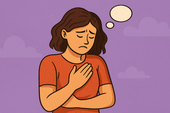
When You Feel Emotionally Unlovable: Challenging the Lie
Feeling unlovable because of your emotions, illness, or sensitivity? You’re not broken—you’re healing. Learn how to challenge the lie of emotional unworthiness and rebuild self-trust, one compassionate step at a time.
-
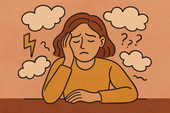
Brain Fog and Fatigue: How to Stop Blaming Yourself
Struggling with brain fog or chronic fatigue? You’re not lazy or failing. Learn how to stop blaming yourself for symptoms caused by MS or chronic illness, and start embracing a more compassionate path to healing and self-understanding.
-

Creating an Emotional Support Team You Actually Trust
Tired of feeling unsupported or misunderstood? Learn how to build an emotional support team you actually trust—with people who see you, hold space for you, and respect your boundaries, especially when living with MS or chronic illness.
-
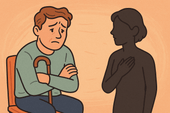
MS, Vulnerability, and the Fear of Being Seen
Living with MS can make vulnerability feel unsafe. Learn why so many people with MS hide their struggles—and how to gently move toward authenticity, self-acceptance, and deeper connection without shame.
-
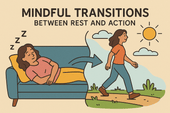
Mindful Transitions Between Rest and Action
Struggling to shift between rest and activity without guilt or overwhelm? This guide offers gentle, mindful strategies to make transitions feel more natural, intentional, and supportive of your nervous system.
-
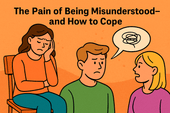
The Pain of Being Misunderstood—And How to Cope
Feeling the sting of being misunderstood? Learn why it hurts so deeply and discover practical, healing strategies to protect your truth, communicate clearly, and rebuild emotional safety when others just don’t get it.
-
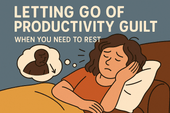
Letting Go of Productivity Guilt When You Need to Rest
Struggling with guilt every time you try to rest? Learn how to release productivity shame, understand why rest matters, and embrace a more compassionate rhythm for healing and recovery—without feeling lazy.
-

Rebuilding Energy Reserves Without Shame
-

What to Do If You Feel Emotionally Invalidated by Doctors
Feeling emotionally invalidated by your doctor can be deeply distressing. Learn how to recognize medical gaslighting, validate your own experience, and advocate for better care when you’re not being heard.
-

How to Rest Without Feeling Lazy
Rest isn’t laziness—it’s a necessary act of self-respect. Learn how to shift your mindset, let go of guilt, and embrace rest as a vital part of mental and physical well-being.
-

Redefining Energy Management as Emotional Self-Care
Energy isn’t just physical—it’s emotional. Learn how redefining energy management as emotional self-care can help you protect your peace, support your nervous system, and live more in tune with your true needs.
-
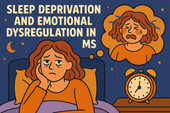
Sleep Deprivation and Emotional Dysregulation in MS
-
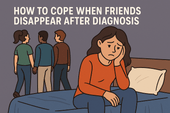
How to Cope When Friends Disappear After Diagnosis
Losing friends after a diagnosis can feel like another kind of grief. Discover why some friends disappear—and how to cope with the emotional fallout while building more supportive relationships.
-

How to Talk to Your Kids About MS Without Overwhelming Them
Struggling with how to explain MS to your kids? Learn how to talk to children of all ages about multiple sclerosis with honesty, clarity, and emotional safety—without overwhelming them.
-
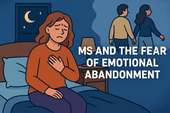
MS and the Fear of Emotional Abandonment
The fear of emotional abandonment is common for people with MS. This article explores why it happens, how it impacts your relationships, and how to create emotional safety and healing.
-
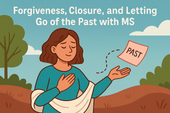
Forgiveness, Closure, and Letting Go of the Past with MS
Living with MS often brings emotional wounds from the past. Learn how forgiveness, closure, and letting go can help you heal emotionally—and reclaim peace in the present.
-
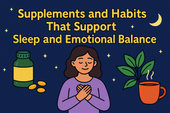
Supplements and Habits That Support Sleep and Emotional Balance
Struggling with poor sleep and emotional ups and downs? Discover calming supplements and daily habits that support deep rest and mental well-being—backed by science and easy to implement.
-
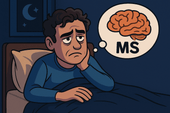
When Insomnia Feels Like Your MS Brain Won’t Turn Off
Struggling to sleep with MS? When your brain won’t shut off at night, insomnia feels relentless. Learn what causes it—and discover science-backed strategies to calm your mind and finally rest.
-

The Emotional Toll of Waking Up Tired Every Day: Why It Hurts More Than You Think
Waking up tired every day takes a deep emotional toll—from mood swings to lost motivation and self-doubt. Learn why chronic fatigue hurts more than you think and how to gently reclaim your mornings.
-
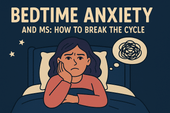
Bedtime Anxiety and MS: How to Break the Cycle
Bedtime anxiety is a common struggle for people with MS—and it’s more than just racing thoughts. Learn how MS-related stress, nervous system dysregulation, and fear of symptoms can create a cycle of sleeplessness, and discover practical, calming strategies to finally reclaim restful nights.
-
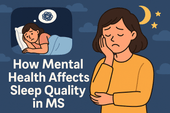
How Mental Health Affects Sleep Quality in MS: Breaking the Cycle of Fatigue and Emotional Distress
Struggling to sleep when you have MS? Discover how anxiety, depression, and neurological changes impact your rest—and what you can do to reclaim it. From CBT-I and calming supplements to lifestyle tips that support both mental health and sleep, this guide offers practical strategies for better nights.
-

Learning to Love Your Life (Even When It’s Not What You Expected)
Your life may not look how you imagined—but it’s still worth loving. Learn how to find peace, purpose, and joy in the unexpected.
-
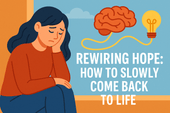
Rewiring Hope: How to Slowly Come Back to Life
Feeling emotionally numb or disconnected? Learn how to gently rebuild hope, one small sensory step and spark of life at a time.
-
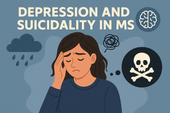
Depression and Suicidality in MS: A Conversation That Needs to Happen
Depression and suicidality in MS are real—and urgent. Learn why we must talk about it, how to spot warning signs, and where to find help and hope.
-
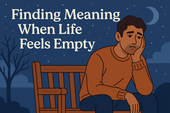
Finding Meaning When Life Feels Empty
Feeling disconnected or numb? Discover gentle ways to find meaning again—even in emptiness—through daily rituals, reflection, and purpose.
-
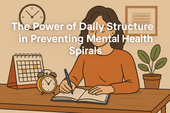
The Power of Daily Structure in Preventing Mental Health Spirals
Daily structure can prevent mental health spirals by creating safety, routine, and self-trust—especially for those with MS, depression, or anxiety.
-

Healing from Emotional Flatness with Sensory Rituals
Feeling emotionally numb or disconnected? Discover how sensory rituals can gently restore pleasure, presence, and emotional resilience.
-
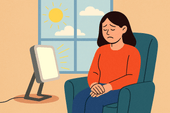
The Role of Light Therapy for Seasonal Depression and MS
Can light therapy ease seasonal depression in people with MS? Discover the science, benefits, and how to use it safely for better mood and energy.
-
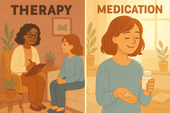
Medication vs Therapy: Treating MS-Related Depression Effectively
Explore whether therapy, medication, or both are best for treating MS-related depression. Understand what works, when—and why combination care is often ideal.
-

How to Support a Partner with MS and Depression
Learn how to support a partner living with MS and depression—practical tips, emotional tools, and ways to protect your own mental health too.
-

The Emotional Cost of Losing Your Old Life
Losing your old life to MS isn’t just about physical symptoms—it’s about grieving the identity, dreams, and freedom you once had. This article explores the emotional toll of invisible grief and how to begin healing without denying the pain.
-
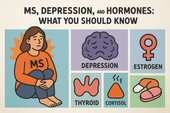
MS, Depression, and Hormones: What You Should Know
MS-related depression isn’t always just emotional—it can be hormonal. Discover how thyroid, sex, and stress hormones influence mood in MS, why women may feel worse during PMS or menopause, and what signs to look for when hormones may be driving emotional instability.
-
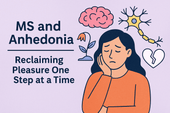
MS and Anhedonia: Reclaiming Pleasure One Step at a Time
Anhedonia—feeling emotionally flat or disconnected—is a common but misunderstood symptom of MS depression. This article explores how neuroinflammation, dopamine disruption, and fatigue can dull your sense of joy—and how small, gentle steps can help you begin to feel again.
-
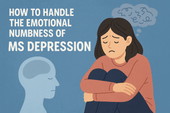
How to Handle the Emotional Numbness of MS Depression
Emotional numbness in MS depression doesn’t always look like sadness—it can feel like nothing at all. Learn why this disconnection happens, how it's tied to neuroinflammation and nervous system overload, and discover science-backed strategies to gently reconnect with your emotions.
-
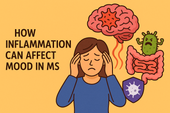
How Inflammation Can Affect Mood in MS
Mood swings and emotional numbness in MS aren’t just psychological—they can be driven by immune system inflammation. This article explores how inflammatory cytokines affect the brain, why mood changes are often biological, and what you can do to calm your nervous system from the inside out.
-
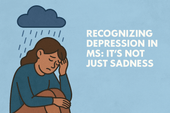
Recognizing Depression in MS: It's Not Just Sadness
Depression in multiple sclerosis (MS) is more than just sadness—it can be a neurological symptom, a side effect of inflammation, or a silent weight that masks itself as fatigue or emotional numbness. This article helps you recognize the hidden signs of MS-related depression, understand the science behind it, and explore real treatment options that support both mental and physical health.
-

Is Cryotherapy Safe for MS? Pros, Cons, and How It Compares to Cold Plunges
Cryotherapy promises quick recovery, inflammation reduction, and mood support—but is it safe for people with MS? This article breaks down the science, risks, and real-life benefits of cryotherapy for multiple sclerosis. You’ll also learn how it compares to cold plunges and which option may be better for calming flares and regulating your nervous system.
-

Can Cold Plunges Help Reduce Inflammatory Flares in MS?
Flares in multiple sclerosis (MS) are often driven by inflammation—but what if cold water could help turn down the heat? This in-depth article explores how cold plunges may help reduce flare frequency and intensity in MS by calming the immune system, lowering pro-inflammatory cytokines, and regulating the nervous system. Learn how to safely use cold exposure as part of your MS recovery routine.
-
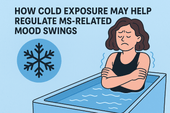
How Cold Exposure May Help Regulate MS-Related Mood Swings
Mood swings are a common but overlooked challenge in multiple sclerosis (MS). This article explores how cold exposure—like cold plunges and showers—may help regulate emotional ups and downs by calming the nervous system, reducing inflammation, and boosting mood-enhancing chemicals. Learn how to use this natural tool safely to support your mental and emotional resilience with MS.
-
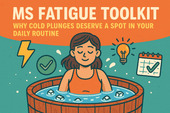
MS Fatigue Toolkit: Why Cold Plunges Deserve a Spot in Your Daily Routine
Fatigue is one of the most debilitating symptoms of multiple sclerosis (MS)—often invisible, misunderstood, and overwhelming. While no single tool can eliminate it, building a personalized fatigue management toolkit can make life more manageable. One surprising contender? Cold plunges. In this article, we explore why cold water immersion might be the refresh button your nervous system needs—and how to safely make it part of your MS fatigue routine.
-
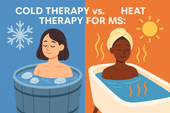
Cold Therapy vs. Heat Therapy for MS: Which One Helps More?
Managing multiple sclerosis (MS) often means navigating symptoms like fatigue, spasticity, pain, and nerve dysfunction. But when it comes to using temperature-based therapies, there’s a question many patients face: Should I be using cold or heat? In this in-depth guide, we explore the benefits, risks, and best use cases of cold therapy vs. heat therapy for MS.
-
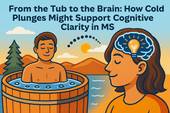
From the Tub to the Brain: How Cold Plunges Might Support Cognitive Clarity in MS
Cognitive fog is one of the most frustrating symptoms of multiple sclerosis (MS). But could cold plunges—those bracing dips into icy water—offer a surprising path to mental clarity? This article explores the emerging science behind cold exposure, brain function, and how a cold tub might help people with MS sharpen focus, lift brain fog, and reset their nervous system.
-
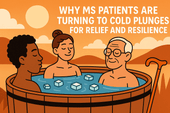
Why MS Patients Are Turning to Cold Plunges for Relief and Resilience
Cold plunges are no longer just for elite athletes and wellness influencers. A growing number of people with multiple sclerosis (MS) are turning to cold water immersion to ease symptoms, build nervous system resilience, and find calm in the chaos of chronic illness. This article explores why—and how—you might want to give it a try.
-

Cold Plunge Therapy: A Hidden Gem for People with MS?
Cold plunge therapy—once the domain of elite athletes and biohackers—is gaining attention among people with multiple sclerosis (MS). Could it help reduce inflammation, calm the nervous system, and ease MS symptoms like fatigue and spasticity? In this article, we dive deep into the science, benefits, safety, and practical application of cold plunges for MS recovery and symptom relief.
-
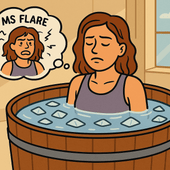
Finding Relief in the Midst of a Flare
MS flares can leave you feeling overwhelmed, exhausted, and mentally foggy. Cold water therapy is emerging as a promising tool to help reset the body and mind after a flare. This article explores how cold exposure supports recovery, calms the nervous system, and can be safely added to your daily routine.
-
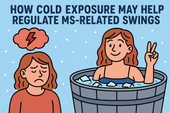
How Cold Exposure May Help Regulate MS-Related Mood Swings
Mood swings in multiple sclerosis (MS) can feel like emotional whiplash—one moment calm, the next overwhelmed, angry, or hopeless. While medications and therapy help, many people with MS are exploring natural strategies to support emotional balance. One surprising tool gaining attention? Cold exposure. In this article, we explore how cold plunges and other forms of cold therapy may regulate the nervous system, stabilize mood, and offer emotional relief for people with MS.
-
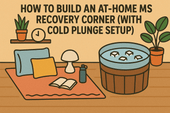
How to Build an At-Home MS Recovery Corner (with Cold Plunge Setup)
Create your personal MS recovery oasis at home—complete with a cold plunge setup. Learn how to design a space that supports healing, reduces inflammation, and helps you manage symptoms naturally.
-
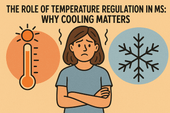
The Role of Temperature Regulation in MS: Why Cooling Matters

















































